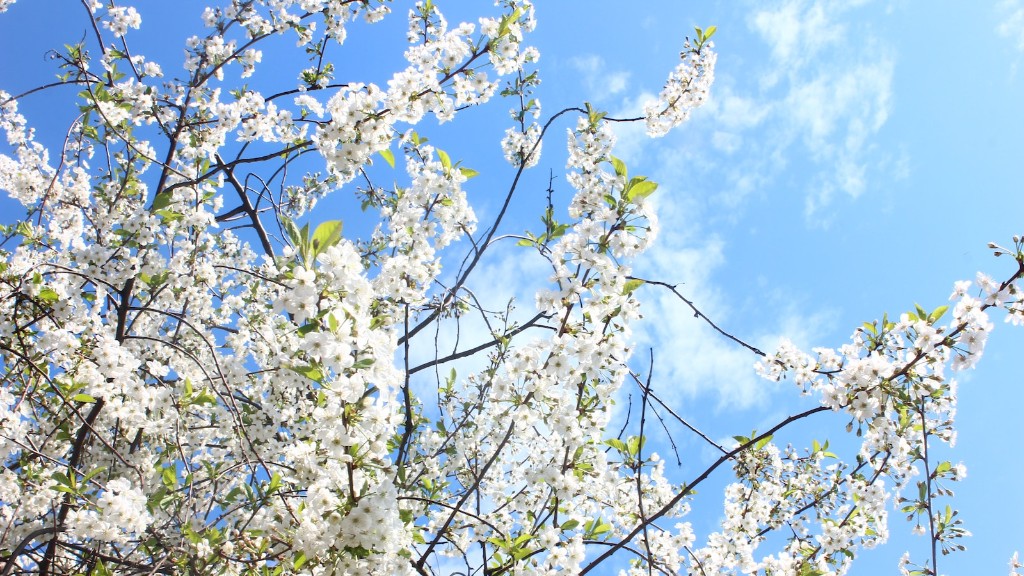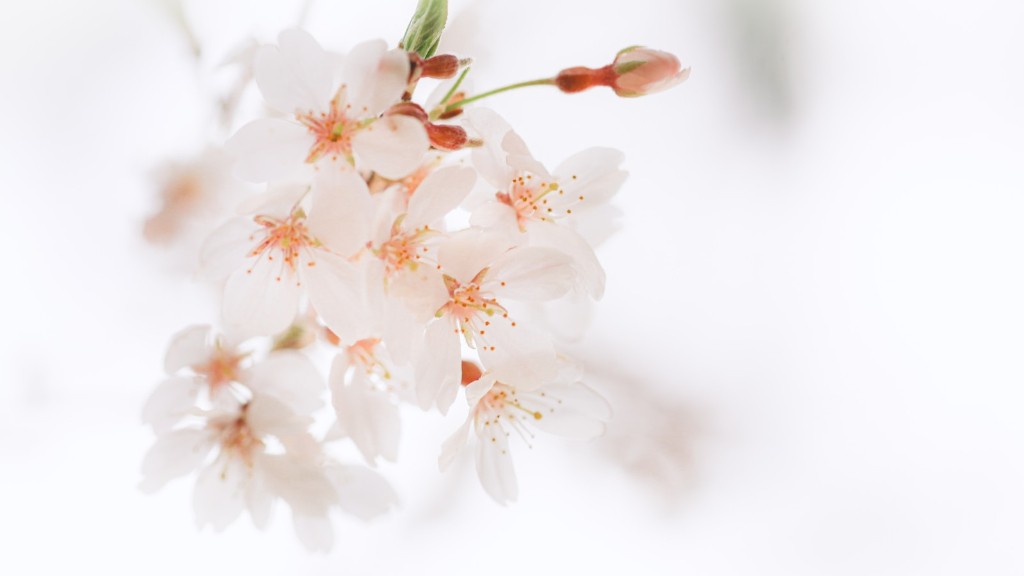Location For Growing A Cherry Tree
Growing a cherry tree requires careful thought and preparation to ensure that the conditions required for a healthy and successful installation are met. Firstly, the tree should be planted in an area where it can receive full sunlight. Ideally, cherry trees need at least 6- 8 hours of direct sunshine during their growing season. Areas near the equator receive a considerable longer period of direct sunshine and are ideal locations for cherry tree cultivation.
The soil type needed to grow a cherry tree can range from loamy to clay, but it must be sufficiently porous to allow good drainage. A soil pH level between 6 and 7.5 is ideal for growing cherry trees. The soil should be watered deeply two or three times a week during the growing season, to promote healthy fruit production.
The amount of space needed to house a cherry tree will vary depending on the type. Standard cherry trees require up to 18 feet in width, but semi-dwarf versions can reach about 6-12 feet in width. These trees can also reach a height of 15-25 feet when fully grown, so it is important to plan the space available before planting.
Finally, cherry trees should receive minimal wind exposure as strong winds can break branches and reduce productivity. Planting the cherry tree in a protected area such as a backyard or sheltered garden would be advisable. It is also best to plant in the early spring when the sun is at its most abundant.
Care For Growing A Cherry Tree
The right care is essential for a healthy cherry tree. As the tree matures, it is important to prune it to maintain its shape and to encourage strong branch growth. Fruits should be removed to prevent overcrowding of the tree and the dead and diseased branches should also be trimmed off.
Good nutrition is also essential for a healthy and productive cherry tree. The tree should be fertilized at least twice a year with a balanced fertilizer. Applying a mulch or compost around the tree’s base helps to retain valuable moisture and reduces the chance of diseases. Additionally, it may be necessary to water the tree in dry periods to increase fruit size and improve fruiting quality.
Pest and disease prevention is also a priority in keeping a healthy cherry tree. Common pests can be controlled through spraying the tree with a plant-based or organic insecticide or by hand picking them off. Common cherry tree diseases can be prevented by applying fungicides and fertilizers early in the growing season, when the tree is still in a dormant state.
Finally, ripening of the fruits can be accelerated by picking and storing them in cool and dark places, to prevent them from spoiling prematurely.
Harvesting A Cherry Tree
Harvesting cherry trees requires patience and knowledge of the best procedures. It is important to assess when the time is right. The best time to pick cherry fruits is when they start to become darker in color and have a bit of give when touched. Feel gentle pressure in the fruit and when it gives, it is joucy – that is the optimal time to pick!
It is important to be gentle when picking the fruits from the tree. Forceful yanking or squeezing can damage the tree and inhibit further growth. Gently twist and pull the fruit off its stem for best results.
Cherry trees should be picked immediately after ripening. With the help of the family, pick off the lower branches first, then work your way up the tree. Any fruits that are bruised, damaged or rotting should be discarded.
Cherry pickers may be used to reach the upper branches of tall cherry trees, but it is important to make sure it is stable to avoid injury. The fruit should be handled carefully, as they are prone to bruising and spoiling easily.
Storing A Cherry Tree
Once the cherry fruits have been harvested, they should be quickly stored in a temperature-controlled and clean container such as a plastic bag, cardboard box, or cloth sack. Place the container in a shady, cool and dry area.
The fruits can be stored in the refrigerator to slow down the ripening process. If they are to be frozen, they should be stored in airtight containers. Keep in mind that canned cherry fruits should not be stored in the freezer.
The cherry fruits should be used as soon as possible for best results. If the fruits cannot be used immediately, they can be stored for up to 3 weeks, depending on the climate and storage conditions.
Cherry fruits can also be preserved in a variety of ways to ensure they last longer. Canning, freezing, and drying are all popular preservation methods. Fruits can also be made into jams, jellies, and preserves.
Growing From Seeds
Growing cherries from seed is a great way to expand a cherry tree orchard. Starting a cherry tree from seed is an exciting process, but it is a lengthy and difficult one. Depending on the species, it can take anywhere from 3 to 10 years for a seedling tree to bear fruit.
It is important to obtain a good quality cherry seed that is hard and smooth. The seed should be planted as soon as it is harvested, as it has a short shelf-life and germinates quickly.
The seed should be planted in a large planting pot filled with moist soil. The pot should be placed in a sunny location. The seed should be planted just below the soil level and then watered regularly.
The seedling should be kept in the pot until it reaches a height of at least 3 feet. Once the seedling is large enough, it should be transferred to the garden or orchard. It is important to ensure that the soil is well drained and of the right pH level.
Care After Planting
Once the cherry tree is in its desirable location, it is important to provide the right care and attention to ensure it grows in a healthy manner. Water the tree regularly and remulch around the tree to increase water retention.
Weeding around the tree is also important to reduce the chances of weeds competing for nutrients with the tree. Ferilizing the tree is also key. Fertilizing encourages strong and healthy growth and helps to increase fruit production.
It is also important to prune the tree when necessary. Pruning helps to reduce the number of fruits and encourages strong brancha growth. When pruning, it is important to take off any dead or diseased branches, as well as any crossing branches.
Cherry trees also require pest and disease prevention measures. Common pests can be controlled by manually picking them off the tree or spraying with a plant-based or organic insecticide. Common cherry tree diseases can be prevented through regular applications of fungicides and fertilizers.
Conclusion
Growing a cherry tree requires careful research, preparation and care. Finding the right location with adequate space, sunlight and soil drainage is paramount. Once the cherry tree is in its desired location, it should be given the right care.
Prune when necessary, fertilize and mulch as required and ensure the tree is kept away frompests and diseases. Harvesting and storing correctly also ensures that the cherry tree will bear healthy fruits for a long time. Growing cherry trees from seed is also possible but it is a lengthy, difficult and rewarding process.

